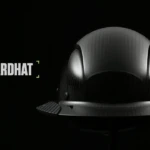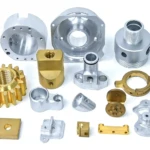The Next Frontier of Precision: How AI-Driven CNC Delivers Unparalleled Accuracy in Manufacturing
The age of precision is upon us, and it’s being shaped by the convergence of artificial intelligence (AI) and computer numerical control (CNC) technology. For decades, CNC has been the gold standard for manufacturing precision, but traditional methods have limitations. With the advent of AI-driven CNC, we’ve entered an era of unparalleled accuracy, where tiny variations no longer hold sway. In this blog post, we’ll delve into the world of AI-driven CNC, exploring its revolutionary capabilities and the future it holds for precision manufacturing.
The Evolution of CNC: From Manual to AI-Driven
Historically, CNC has relied on manual calculations, human operators, and conventional programming languages to operate machine tools. While this approach provided a level of precision, it was limited by human error and the complexity of programming. With the introduction of AI and machine learning, NC/CNC has undergone a significant transformation. AI-driven CNC marries the strengths of both worlds, combining the speed and adaptability of human experts with the precision and reliability of machine learning algorithms.
Key Components of AI-Driven CNC
The RMS (Reduced Mean Squares) algorithm is the backbone of AI-driven CNC. This self-correcting system analyzes and adjusts the machining process in real-time, ensuring that each layer is precisely machined to ensure the highest possible accuracy. The advantages of RMS are twofold: it reduces the risk of human error and diminishes the need for rework.
How AI-Driven CNC Guarantees Unparalleled Accuracy
Employing AI-driven CNC enables manufacturers to achieve precision that was previously unattainable. The key lies in the layer-by-layer scanning and correction process:
- Laser scan per layer: AI-driven CNC devices are equipped with highly accurate laser scanners that capture the three-dimensional layer-by-layer topography. This data is then fed into the RMS algorithm, which enables the machine to make subsequent adjustments in real-time. By analyzing each layer, the algorithm identifies any discrepancies, correcting errors, and ensuring the desired level of accuracy.
- Self-correction tool path: The RMS algorithm’s precision is further enhanced by its ability to adapt the tool path. This self-correction feature refines the cutting tool’s movements in real-time, eliminating any remaining inaccuracies. The result is a machined part that meets the required tolerance, time and time again.
The Benefits of AI-Driven CNC: A New Era of Precision Manufacturing
The advantages of AI-driven CNC are multifaceted:
- Flawless execution: By eliminating human error and reliance on manual programming, AI-driven CNC ensures that each component is precision-cut, every time.
- Increased efficiency: The automation of the machining process streamlines production, reducing lead times and increasing overall capacity.
- Enhanced accuracy: The self-correction feature guarantees the highest level of precision, reducing the need for rework and post-processing.
- Improved reliability: AI-driven CNC minimizes the risk of human error, ensuring consistent, reliable results.
Conclusion
The marriage of AI and CNC technology has ushered in an era of unprecedented precision in manufacturing. By harnessing the power of machine learning and advanced computer vision, AI-driven CNC has revolutionized the way we approach precision manufacturing. As the demand for high-quality parts continues to grow, AI-driven CNC is poised to play a critical role in meeting this challenge. With its ability to guarantee ±0.001mm accuracy, AI-driven CNC is redefining the boundaries of precision manufacturing, ushering in a new era of precision, reliability, and efficiency.

















